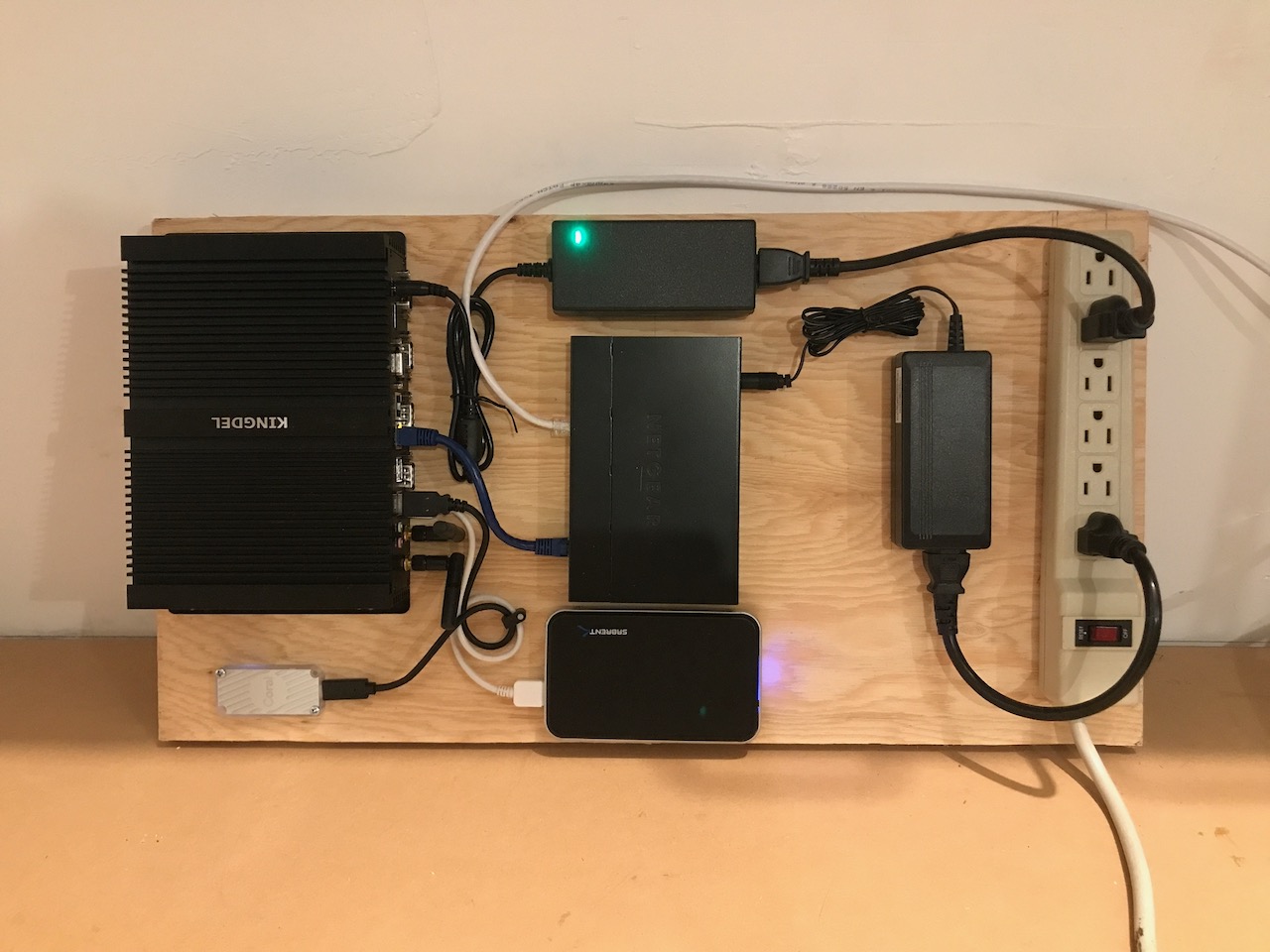To help cut down on false positives when using motion,
I created a server that sorts the movie events depending if their constituent images contain
a class from the MS COCO training set. It does this by a post-hook to on_movie_end.
I have my cameras running on an embedded Intel Core i5 fanless platform so adding a GPU is not possible. Instead I plugged in a Google USB Coral Accelerator TPU stick and it is sufficient. Since the server queues the inferences after the pictures and movie have both been written, it can take however long is necessary.
You'll need to setup the PyCoral TPU libraries on your host machine. Once that has been verified, you can test the server.
Add these line to your motion.conf, changing the location of this repo as
needed:
picture_filename %v-%Y%m%d%H%M%S-%q
movie_filename %v-%Y%m%d%H%M%S
on_movie_end /media/usbdisk/motion/nnet-sorter/client.py %f
There are two threads: the socket listener & queue, and the inference thread. This allows handling incoming requests in a performant way.
The server opens a socket and listens. The client sends it an MP4 full-
pathname. The file must start with %v, the event number, followed by
a hyphen. The server then scans all of the JPG files that start with the
prefix up to the hyphen. If it finds an object with 50% confidence, it
moves the mp4 file to a new directory, along with the first image that
triggered the detection (for thumbnailing).
Since images are recorded faster than they can be processed, we don't want to block motion, so the client does not wait for a response.
If the client passes a .jpg, the sever will just return all objects
found to STDOUT and not move anything. It's a quick-check utility.
In this example, first the server is started and put in the background, then the client first sends a captured MP4 file, and then tells the server to exit.
TODO: Add an example that actually detects something. :)
$ ./server.py
Model loaded
Listening on port 19011
^Z
[1]+ Stopped ./server.py
$ bg
[1]+ ./server.py &
Queue: b'/media/usbdisk/motion/captures/13-20210812193848.mp4'
Checking 91 images in /media/usbdisk/motion/captures/13-20210812193848.mp4
check_image_file(/media/usbdisk/motion/captures/13-20210812193854-00.jpg) [1/91]...no objects
check_image_file(/media/usbdisk/motion/captures/13-20210812193854-06.jpg) [2/91]...no objects
check_image_file(/media/usbdisk/motion/captures/13-20210812193851-01.jpg) [3/91]...no objects
check_image_file(/media/usbdisk/motion/captures/13-20210812193850-01.jpg) [4/91]...no objects
:
:
check_image_file(/media/usbdisk/motion/captures/13-20210812193854-10.jpg) [90/91]...no objects
check_image_file(/media/usbdisk/motion/captures/13-20210812193850-07.jpg) [91/91]...no objects
...nothing to save
Queue: b'exit'
Exiting QueueThread on exception
[1]+ Done ./server.py
$ ./client.py /media/usbdisk/motion/captures/13-20210812193848.mp4
$ ./client.py exit
I bought a small quad core i5 fanless Intel box. It is actually slower than the Arm v8 core, which I didn't realize until I ran CoreMark on both. That's a PPoE router supplying power to the CCTV cameras. External 1TB rotational drive and the Google TPU down on the bottom attached by USB2.
